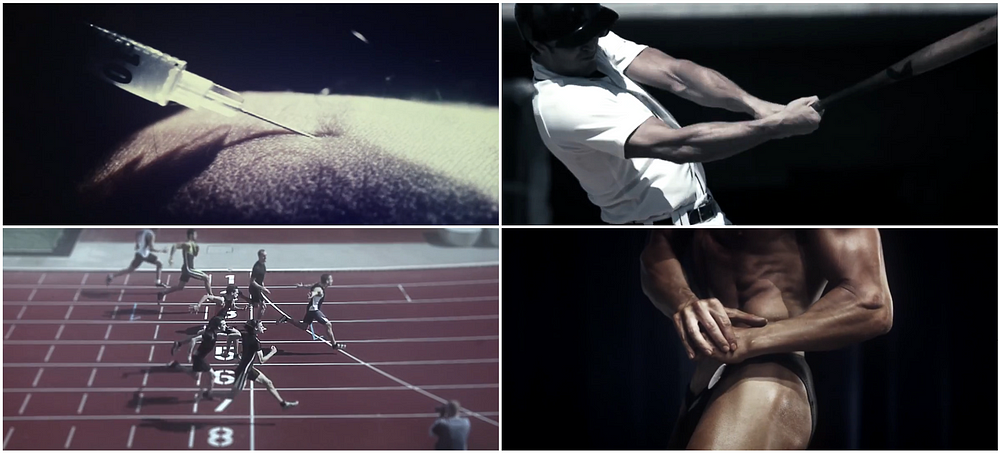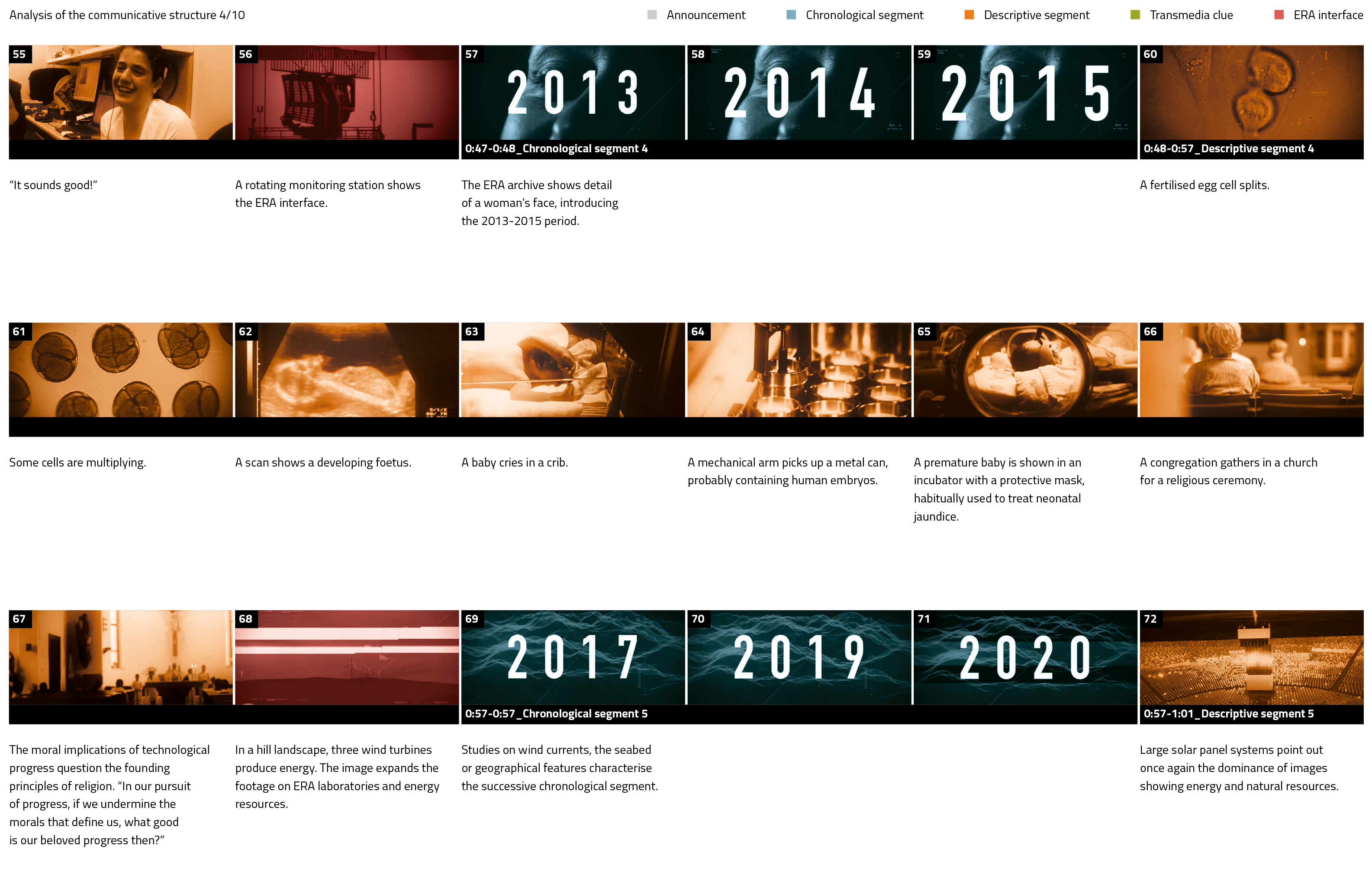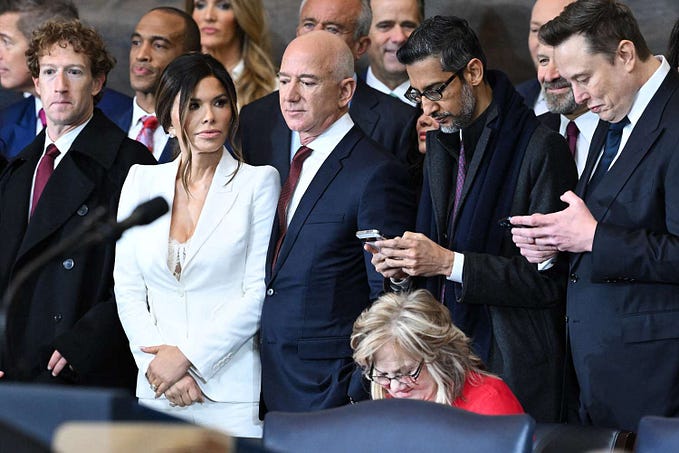This document proposes an analysis of Ember (2:51/3:01; Patrick Clair, 2015)[1], promotional video of Call of Duty: Black Ops III (Treyarch Studios, 2015), videogame on military and biotechnological subject including dystopian transhumanist elements. The research considers the product and its materials by studying the creative choices, the informative properties, the modalities of visual representation and promotion.

1. Introduction
1.1. Synopsis
1993–2065: the unrestrained and primordial human will to go beyond natural bodily bonds using medicines, devices, prostheses and extreme surgery will lead humanity to live an unprecedented techno-social and cultural crisis, permanently destabilizing the world order by 2065.
“In the next 50 years, technological advancements will lead us into a world where only those who risk going too far, will find out how far we can actually go.”[2]
1.2. The world of Black Ops III: defining the dystopia
Set in 2065, Call of Duty: Black Ops III[3] presents a futuristic world characterized by advanced biotechnologies, natural disasters, social insurrections and armed conflicts. In the military area, technological advancement has produced extremely performing weaponry, defensive systems and robotic machineries that have redefined the entire military industry, the armed forces and battle strategies. Thus, special units have appeared, units composed of soldiers enhanced with cybernetic implants and biotechnological surgery, employed for the Black Operations, which are secret military operations financed by governments for purposes of global control.
1.3. Background of the decline
Conceived as simulation of a documentary, Ember (3:01)[4] introduces and expands the science-fiction setting represented in CoD: Black Ops III anticipating key information on the videogame’s world; information then revealed with further promotional material, and finally directly made known through the gaming experience[5]. The documentary evolves showing a visionary chronology of events that took place between 1993 and 2065 and demonstrating, in a skillful combination of archive material and original sequences, how the desire to transcend human physiological limits determined deep global crisis (which is economic, geopolitical, social, ethical, cultural, climatic and biological) and irrevocably changed mankind’s fate.

“Mankind’s greatest mistake will be its inability to control the technology it has created.”[6]
Considering the transmedia communicative strategies[7] that have been adopted during the Call of Duty: Black Ops III promotional campaign, the film proves to be a particularly important project because:
- It is a cinematographic prologue independent from the gaming narrative, which testifies to the growing stylistic similarities between film, gaming and advertising productions, mostly with regard to the possibilities of narrative complementarity.
- It documents the cultural and scientific changes that happened between 1993 and 2065, highlighting the fictional world’s key topics (drug abuse in sports, technological development, cultural crisis, extreme biotechnologies, climate change, financial speculation, social uprisings, international terrorism, governmental secrets, cybernetic military experiments), and developing a creative universe with multiple
chronological, geographical and narrative levels. - It integrates true material (interviews, conferences, historic facts) with fictional footage, realising a film in documentary style which results in a plausible science fiction dystopia that amplifies present topics and issues.
- It represents a transmedia extension of the videogame that expands its narrative universe (the gaming narrative is only one of many potentially serial stories), and it encourages the user to explore collateral domains and official social platforms.
- It promotes the videogame celebrating its fictional world, with the purpose of creating the desire of interacting with the intellectual property through gaming, also increasing commercial expectations.
- It stimulates interest among a diversified audience, which includes affiliate users, curious viewers, scholars, business operators and rival gaming companies.
- Given the type of sensitive issues being addressed (bioethics, religion, pollution, justice), the inclusion of an interactive collateral questionnaire establishes a relationship based on complicity and collaborative entertainment with the viewer-user, which provides an immersive experience (the simulation of a sociological and political survey in a science fiction trans-human world), and gives back unique graphics, created on the basis of personal and potentially repeatable choices.


“Subjects appear unable to distinguish the implanted memories from their own.“[8]
2. Analysis
2.1. Visual structure and information management
Re-examining the CoD: Black Ops III transmedia campaign, the combined use of entertainment processes and integrated information meets particular communicative purposes. As in many other similar products conceived to be immersive[9], the release of promotional material is carefully planned and
measured to unveil only a limited number of information elements, providing indefinite narrative spaces (potentially open for exploration in collateral products) and serial clues, with the aim of attracting many types of viewers and promoting the product in the various available media systems.
Such strategic management of contents stimulates research and sharing activities among users, and increases expectations for the videogame and its visibility on the Web rewarding affiliated communities, expanding its intellectual property, establishing competitive project goals and arousing the curiosity of a broad public.
In Ember, the balance between images and textual information reaches particularly refined levels by combining cinematographic modalities, advertising contents, transmedia hints and gaming promotion. By trying to better understand its communicative properties and informational potential, a systematic analysis of its general structure, frames, dialogues and other primary elements has been carried out.
The Ember analysis proposal is organised in summary sheets and consists of:
- Dialogue transcription
It reports the original texts. - Summary of information elements
It introduces the basic characteristics of the fictional world. - Frame visualisation
It presents the 175 examined framings. - Identification of thematic sequences
It establishes relations between frames subdividing them in thematic units. - Organisation of thematic sequences
It presents the identified sequences’ development order. - Analysis of the communicative structure
It includes the description of every chosen framing and a related interpretation proposal. - Individuation of transmedia clues
It points out external references and identifies their communicative function.
2.2. Dialogue transcription
Announcement
Mankind’s greatest mistake
will be its inability to control
the technology it has created.
— 1993-1998
He’s leaving every man in the path behind.
What a show of dominance!
Allegations of doping continue…
What has happened to sports?
Should the record still count?
—1998-2000
Today we celebrate
the first draft of the
human book of life!
—2005-2011
It’s been called the age of wearable
technology. Amazing things happen when
we merge technology with our body.
We will set the technological foundation
for an enhanced human experience and
we will end disability.
How does that sound? It sounds good!
—2013-2015
In our pursuit of progress,
if we undermine the morals that
define us, what good is our beloved
progress then?
—2017-2020
The Court declared discrimination against
modified persons unconstitutional.
—2021-2025
A historic day in sports as the IBA
becomes the first league to allow
modified athletes to compete.
—2026-2028
Here she is, the fastest human in
history. After all the debate,
all the controversy… victory!
—2033-2041
Scientists announced they created
the first networked brain to brain
connection. You can now literally share
your thoughts with someone else.
—2044-2051
Biotech market skyrockets as DNA
upgrades and organ replacements
become the new luxury!
—2052-2055
You look at me and you see only what you wanna
see. But you know what I see? Everything!
The 2055 retinal implant. From Courtoptic.
—2057-2061
Massive blast at bionic firm Coalescence
Corporation bursts worldwide protest.
We can no longer stand in silence as these
scientists play God!
This is not about technology, this is about
right and wrong.
—2061-2065
You think the retinal chips that you buy at
the mall are hi-tech? Our military is light
years ahead of that. The things that we use
to heal ourselves they’re using to literally
turn humans into weapons.
The notion that the United States sponsor
some sort of supersoldier program, it’s not
just untrue, it’s patently absurd.
Next question.
Neural control, voluntary limb replacement,
this is happening.
The only question that remains is…
How far will we allow it to go?
—(Call of Duty: Black Ops III logo + world publishing date)
2.3. Information elements

2.4. Frame visualisation


2.5. Identification of thematic sequences
By considering the frames, some structural constants regulating the images’ disposition as to their frequency, type and visual function emerge.
After having determined each constant’s distinctive features, it is possible to ascribe the images to a superior communicative unit, defined as thematic sequence.
In the film’s structure, 5 separate thematic sequences can be identified:
- Announcement
An opening text introducing the narrative or information on the product (for example its publishing date). - Chronological segment
It shows a reference date. It is often combined with an ERA interface with graphic elements and images, which establish a semantic relation. - Descriptive segment
It describes the social and technological context of a given historical period. - Transmedia clue
It contains a reference to contents which are external to Ember, independent but complementary to it. - ERA interface
Geometric shapes, numbers, graphic (in white or red) and textual elements (even geographical names or Chinese characters) identify a hypothetical research archive named as ERA.



2.6. Organisation of thematic sequences


2.7. Variations in thematic sequences


2.8. Analysis of the communicative structure










2.9. Individuation of transmedia clues
Ember’s communicative architecture includes specific information elements conceived to expand the project’s narrative potential, referring it to collateral media experiences. Talking about communicative requirements and primary promotional objectives connected with CoD: Black Ops III, the inclusion of transmedia clues allows to:
- At macro level, turn a product’s promotional campaign into an additional entertainment experience.
- Support the videogame’s narrative with other communicative means (which are cinematographic[10], in form of documentary or advertisement), expanding knowledge on the game’s setting and simulating interactions with the real world (for example, creating the Coalescence and Courtoptic visual identities).
- Stimulate the user over the long term, by encouraging technological migrations towards Internet domains (the official CoD website, promotional profiles and social platforms) or other similar products[11] (for example, the previous Black Ops and Black Ops II chapters and the related comic book series[12]).
- Establish a relationship based on dialogue with the user, evaluating his interaction skills with regard to comprehension, reactions, research and sharing methods, calibrating in this way the strategy for the development of the whole promotional campaign.
- Add value to the users’ and communities’ role and operational potential including immersive and customisable promotional activities (for example, the political-fiction questionnaire), which are meant to encourage collective enjoyment practices.


2.9.1. Coalescence Corporation
Born with the objective of definitively overcoming diseases and disability, Coalescence Corporation is the main responsible for the controversial techno-social change that has then degenerated into a biotechnological dystopia by 2065. Considering the information reported in Ember, the bionic firm goes through a phase of exponential growth from 2051 onwards (frames 79–83), when the market offers genetic engineering operations and enhancing surgery for the rich. Understandably, Coalescence’s policy of privatization of health systems has thus generated significant social tensions between enhanced (genetically superior) and normal people (at risk of debilitating diseases), in an unstable political and cultural climate, marked by social divisions, financial speculation and racism. In 2061 (frame 138), the devastating blast that occurs at a Coalescence plant[13] reveals the company’s suspected illegal activities, causing violent protests all over the world.
“Biotech market skyrockets as DNA upgrades and organ replacements become the new luxury!”
The company’s official website, simply conceived as an enigmatic black screen with no content, adds to the references reported in Ember: the only interactive element is the CEO (Chief Executive Officer) acronym, which invites the customer to contact the firm’s president by email[14].
Science-fiction announcements and realistic advertisements are then published periodically on Coalescence’s official Twitter profile[15] including, for the first time, the company logo.

“You look at me, and you see just what you wanna see. You know what I see? Everything!” [16]
2.9.2. Courtoptic
The descriptive segment included after the 2052–2055 period (frames 88–96) shows a realistic advertisement for a specific ocular biotechnology for civil and sport use. The sequence shows an Afro-American basketball player declaring his superior vision thanks to a Courtoptic (second bionics company introduced in Ember) retinal implant. In conclusion, with the player depicted in an air move, the viewer is invited to visit the reported official website and book the product. The domain is made of a single main page and, automatically, the advertisement is visible in little, with the indication of the product’s upcoming commercial availability[17].

The project’s apparent simplicity is contradicted by a piece of information hidden in the page’s building code[18]: it is Bluebird, the word visible for a few moments in Ember (frame 96). The key word, if typed in capital letters, gives access to a secret Tumblr page[19] containing documentation on V.E.R.S.I.O.N., a medical experimental project run by Coalescence from 2037 to 2063, specifically in Singapore and Zurich[20]. In this way, the user is able to know more about the narrative context underlying the game’s main story, discovering the founding backstories of the futuristic world of Black Ops III.
3. Conclusions
3.1. Promoting fictional reality
Call of Duty: Black Ops III’s promotional strategy, which was devised for over six months, combined serial videos, interdependent Internet domains, reinterpreted archive material, interactive experiences (the questionnaire), social platforms for narrative use (Snapchat, Tumblr, Twitter, Soundcloud), collateral stories and many other community initiatives. In a complex and long-lasting communicative context, the great balance between images and textual information managed to convert the project’s complexity, fragmented in diverse styles and media spaces and stratified in many narrations, into a vehicle of commercial success, simultaneously attracting longtime users and occasional viewers coming from generalist medias[21].
Ember’s case, together with a broad and commendable record of similar projects[22], shows the growing use and constant improvement of transmedia configurations also in the gaming area[23], and points out, at macro level, the sector’s tendency to invest in immersive intellectual properties conceiving extended, modular and recursive narrations, that can be structured in a wide range of products and promoted while carefully evaluating communication modalities, available technologies, cultural trends and the competitors’ initiatives.
Considering Ember’s single case as a star in an expanding creative universe (which is, metaphorically, Call of Duty’s entire intellectual property), Black Ops III’s videogame project is undoubtedly conceived as the fundamental and primary narrative, but is also designed, in a transmedia project perspective, as one of the many spaces available for narrative development in the related science-fiction world: this avoids assigning to the game the unique function of representing the conclusion of the depicted dystopia, leaving instead many narrative spaces (some of them being explored right in Ember) open, intact and reusable adopting a communicative system designed to develop complementary exploratory experiences.
“A good world can sustain multiple characters (and their stories) and thus successfully launch a transmedia franchise.”[24]
Logically, the intention is to amplify the intellectual property’s executive potentialities creating a mould, in other words an informative structure capable of generating serial content, cyclically renewing itself for commercial purposes with the aim of obtaining fruitful inter-sectoral results. The highest achievement is the creation of a long term entertainment plan where the complete understanding of a narrative world implies, almost inevitably, the exploration of a vast network of media products (in literature, cinema, television, comics, videogames, music, documentaries and exhibitions) trying to connect different user profiles (readers, viewers, users, players and researchers) and protecting the authors’ control process on copyrighted material as well as opportunities for economic profit. In an example of transmedia structure sophisticated as the model examined in Ember, films introduce videogames and vice versa; commercials promote unreal goods; social platforms develop separate narratives; soundtracks reveal encoded
narrative clues; editorial and analogue artifacts give new value to paper documents and real social interactions, and Internet domains become entertainment and sharing areas that continue to exist even after the sales period, preparing the public for other novelties and expectations.
3.2. Project complexity and extended entertainment
In a continuously evolving (both technologically and culturally) media scenery, increasing competition in the sector keeps stimulating interdisciplinary contamination between traditionally distinct communicative modalities, creating significant notional, executive and promotional changes that impose non-stop redefinition of management models and the corresponding professional roles. Consequently, there is a cyclic need in the creative industry to study a specific communication system capable of meeting the constantly renewing commercial requirements of an extremely active, expert and willing to invest considerable resources (both intellectual and financial) audience, which seeks especially advanced forms of immersive entertainment. In an extremely problematic and competitive inter-sectoral position, transmedia communication seems to be still capable of standing out, in various experimental and certainly improvable forms, as a functional and versatile solution, designed to promote strategically the whole creative heritage of an intellectual property.

and witness, live, a cyber-attack by a group of anti-enhancement activists named “Purity First”, engaged in denouncing Sarif’s illegal activities. Moreover, the promotional campaign includes a documentary on real progress achieved in the biomedical field and the related social issues. See [https://goo.gl/reMs2B] [https://goo.gl/qjkJBo] [https://goo.gl/XwcvLc] [https://goo.gl/BjdSn1]
Notes list
The hyperlinks are abbreviated by Google Url Shortener.
[1] The intended duration is the actual one, without the final advertising material, originally absent. The director’s personal website includes a second version, different in duration (2:08), number and type of frames. See https://goo.gl/TyjAjw
[2] Official description text reported on YouTube. See https://goo.gl/fj5OD3
[3] CoD: Black Ops III was 2015’s most purchased entertainment product (first in standings in the film, music and book categories), marking a sales value of more than 550 million dollars in the first three days of its commercial availability. See https://goo.gl/1n1Lt5
[4] Published on YouTube on 23rd April 2015, Ember counted over 13 million views on 15th February 2016. Moreover, the video shares a sequence with a short CoD: Black Ops II promo documentary (Treyarch, 2012). See https://goo.gl/ILbvFQ
[5] The successive unveiling promo (26th April) is entirely dedicated to gaming sessions with urban sceneries, firefight and close-range battles. Another promo (30th September) presents the main narrative. Finally, the video game starts with an introductive sequence showing the social and technological setting of the fictional world. See https://goo.gl/xrkn5h, https://goo.gl/mdOPXM and https://goo.gl/GLyNbG
[6] Ember’s opening phrase. Establishing a semantic connection between this opening phrase, the official YouTube description and the title, the word “ember” (the remains of a fire) defines the metaphoric beginning of a phenomenon (such as the embers of a future biotechnological conflict), functioning as a prophetic and unavoidable warning. In my opinion, “ember” may hint at the verb “(to rem)ember”, exhorting to think about the anticipated risk of global crisis. Moreover, the verb points out the concept of memory, key element to understand the CoD: Black Ops III gaming narrative.
[7] From Snapchat (20 enigmatic videos) to Soundcloud (audio file with an encrypted Morse code message), from the official Call of Duty website (individual political-fiction questionnaire) to Tumblr (confidential medical documents protected by a keyword) and Twitter (fake individual and institutional profiles), the CoD: Black Ops III promotion has developed distributing informational material via diversified media channels.
[8] The phrase comes from video n° 15/20. The speaker’s identity is suggested by CoD’s Snapchat profile, renamed in April 2015 as “Dr. Salim”, that proved to be an Egyptian psychotherapist involved with Coalescence in illegal military experiments on neural control. See https://goo.gl/aa6Dt1 and https://goo.gl/uJl2SX
[9] Considering an important example, the sophisticated and award-winning Prometheus (R. Scott, 2012) promotional campaign shows the countless internal practical potentialities of a transmedia project. See https://goo.gl/DsVZ2r and https://goo.gl/e8YSf
[10] See the zany promos CODnapped (with S. Graham) and The Replacer (with P. Stormare).
[11] In collaboration with food and beverage brands Doritos and Mountain Dew (involved in the CoD: Modern Warfare 3 and Advanced Warfare promotion) a dedicated promotional domain was created. The interactive experience, through the products’ purchase code, allows to redouble experience points during gaming sessions and view unpublished information connected with science-fiction contents represented in Ember. Note: the Internet domain has now been disconnected. See https://goo.gl/g7iMc2 and
http://goo.gl/0TVdRW
[12] Published by Dark Horse in collaboration with Treyarch and Activision, the series consists of six numbers (the first one published on 4th November 2015) and explores Call of Duty: Black Ops III’s narrative background.
See https://goo.gl/ZZUvDm
[13] More information is published on 29th September 2015 on CoD’s official Twitter profile, renamed and modified in graphics as a realistic newspaper called “Current Event Aggregates”. False news of a terrorist attack that occurred at a Coalescence lab in Singapore is published on the profile. After the declaration of the state of emergency, footage of protests and other news on a quarantine area follow. See https://goo.gl/oN4wyc
[14] The active e-mail is ceo@CoalescenceCorp. On 23rd April 2015 the official Courtoptic Twitter profile posts a message of congratulations for David Vonderhaar (Treyarch designer), new chairman of Coalescence. See https://goo.gl/OWq6ns
[15] Active from 23rd April to 28th November 2015, the profile also contains two articles that were written simulating tampering with the company’s computer system, which would make the existence of anonymous antagonists engaged in revealing to the world illicit use of biotechnological enhancements explicit. The identity-building sentence “Enhance Yourself For a Better Future” is also shown. See https://goo.gl/L27LMH
[16] The phrase comes from the player.
[17] The official Courtoptic Twitter profile describes Coalescence as a “sister company”. See https://goo.gl/xKd8AJ
[18] If using Google Chrome, it is visible selecting the Visualise > Developer options > View source commands. Note: the domain has now been disconnected.
[19] The “Virtual Simulation of Response Similarities in Organic Network” dedicated page was discovered deciphering a Morse code sequence present in an audio promotional message called “Questions”, published on Soundcloud through a profile named as Jaxiplanet. Note: the Tumblr page has now been disconnected. See https://goo.gl/aCpqKc and https://goo.gl/tVmgHg
[20] The text describes experiments carried out to install neural implants on two human beings. The author of the narration is Michael Rudin, already involved in the realisation of two short stories connected with Call of Duty: Black Ops II (2012) and Call of Duty: Ghosts (2013). See https://goo.gl/9cEtPP
[21] Among many quotable examples, the attention of The Guardian, Redbull and Forbes for the game demonstrates Call of Duty’s deep media and cultural penetration. See https://goo.gl/rvePBS https://goo.gl/L1yZCW and https://goo.gl/tCVfZ5
[22] Futuristic dystopian videogames with a transhuman theme Deus Ex: Human Revolution (2011) and Deus Ex: Mankind Divided (2016) include immersive developments and transmedia-based promotional solutions.
See https://goo.gl/zC9nN8 https://goo.gl/XwcvLc https://goo.gl/M6c3nE https://goo.gl/ruvjvL
[23] CoD is part of a vast and broadening set of intellectual properties for cinema and videogame use which is still expanding in transmedia through reshooting, serial projects, adaptations and multiple narrative crossings. The Star Wars (G. Lucas, 1977), Alien (R. Scott, 1979), Jurassic Park (S. Spielberg, 1993), The Matrix (L. and A. Wachowski, 1999), X-Men (B. Singer, 2000), Halo (Bungie/Microsoft, 2001), Harry Potter (C. Columbus, 2001), The Lord of The Rings (P. Jackson, 2001–2003), Assassin’s Creed (Ubisoft, 2007) productions, plus other, exemplify prototypic contemporary creative worlds.
[24] Henry Jenkins, 2003. Complete reading is recommended. See https://goo.gl/GHFi6t and https://goo.gl/Ijkst
Study method and sources
This document is the result of a compilation process created with scientific and accessibility requirements. Special care has therefore been devoted to coherently structuring the texts and analysis sections, to selecting functional visual devices, and to providing verified information by correctly citing sources of documentation, with the final objective of sharing useful material for the purposes of study, criticism and information.
References to all the sources consulted have been inserted using numbers in square brackets [] and reported in the references at the conclusion, with the relative explanatory notes. The hyperlinks’ accessibility was verified on 15th February 2016, when originally published. A final and complete revision was made on 24th July 2018.
Legal notice
The iconographic material, the trademarks (registered or unregistered) and all the information reported as being in any case protected belong to the respective owners. The internal use of protected material responds exclusively to a scientific and cultural intent.
The author releases the document through the license:
- Creative Commons BY-NC-SA 4.0.
This allows third parties to share the published material indicating the origin, respecting the same type of original license and prohibiting the use for commercial purposes.
Contact
For information, communications or proposals for collaboration write to
Enrico Granzotto | e@humenhoid.com | Humenhoid.com
Follow Humenhoid on Instagram
Humenhoid’s projects include:
- Project Prometheus
A comprehensive case study on information management and narrative design in the Alien (R. Scott, 1979) and Prometheus (R. Scott, 2012) interconnected franchises. (120 pp; available upon request)









